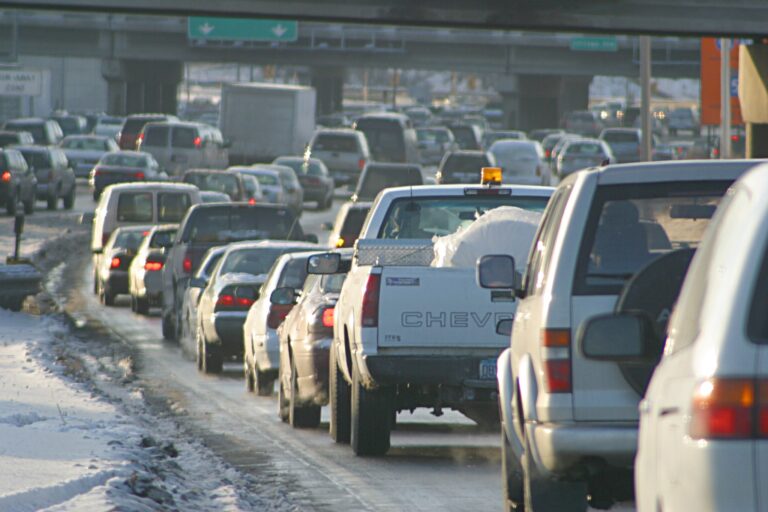Published on June 7, 2022

EPA’s proposal to limit toxic pollution from heavy-duty trucks is stronger than anything that has come before it. But state and local air quality agencies say it’s not aggressive enough to meet the federal regulator’s own clean air standards.
The National Association of Clean Air Agencies — which represents 115 local air pollution control agencies across 41 states, four territories and the District of Columbia — estimates that more than a third of the U.S. population lives in an area that does not meet federal air quality standards. One of the reasons: truck traffic.
Now, as EPA moves to limit heavy-duty truck emissions, it is also creating stricter standards for particle air pollution. But the NACAA says the draft truck rule is too weak to help states meet current air quality standards, let alone the new ones.
“In the 1970s there were more opportunities for emissions reductions because we had not yet started to reduce emissions,” said Julian Marshall, a civil and environmental engineering professor at the University of Washington. “But the easy stuff has already been addressed, so the number of [pollution] sources they can control is getting smaller and smaller.”
A study published this year in the journal Environmental Science & Technology Letters found a correlation between redlining — a discriminatory mortgage appraisal practice from the 1930s — and air pollution levels in Black neighborhoods.
“This is what many communities have been saying for decades, that the risks from air pollution are not felt equally across members of our society,” said Marshall, who co-authored the study. “And ethically, that’s almost its own separate reason to care about air pollution. There’s this fairness aspect to it.”
Marshall said one reason for the disparity is because in the 1960s the federal government routed freeways directly, and often intentionally, through Black and low-income neighborhoods — a historical wrong the Biden administration has said it wants to help remedy (Climatewire, Dec. 8, 2021).
Continue reading at Scientific American.
Originally written by Arianna Skibell for Scientific American.